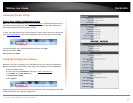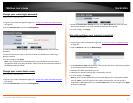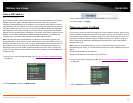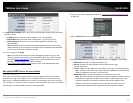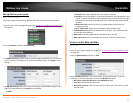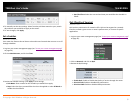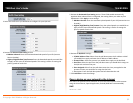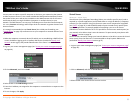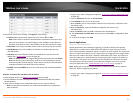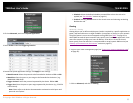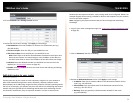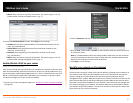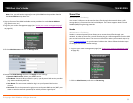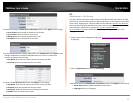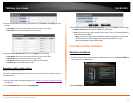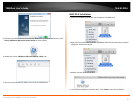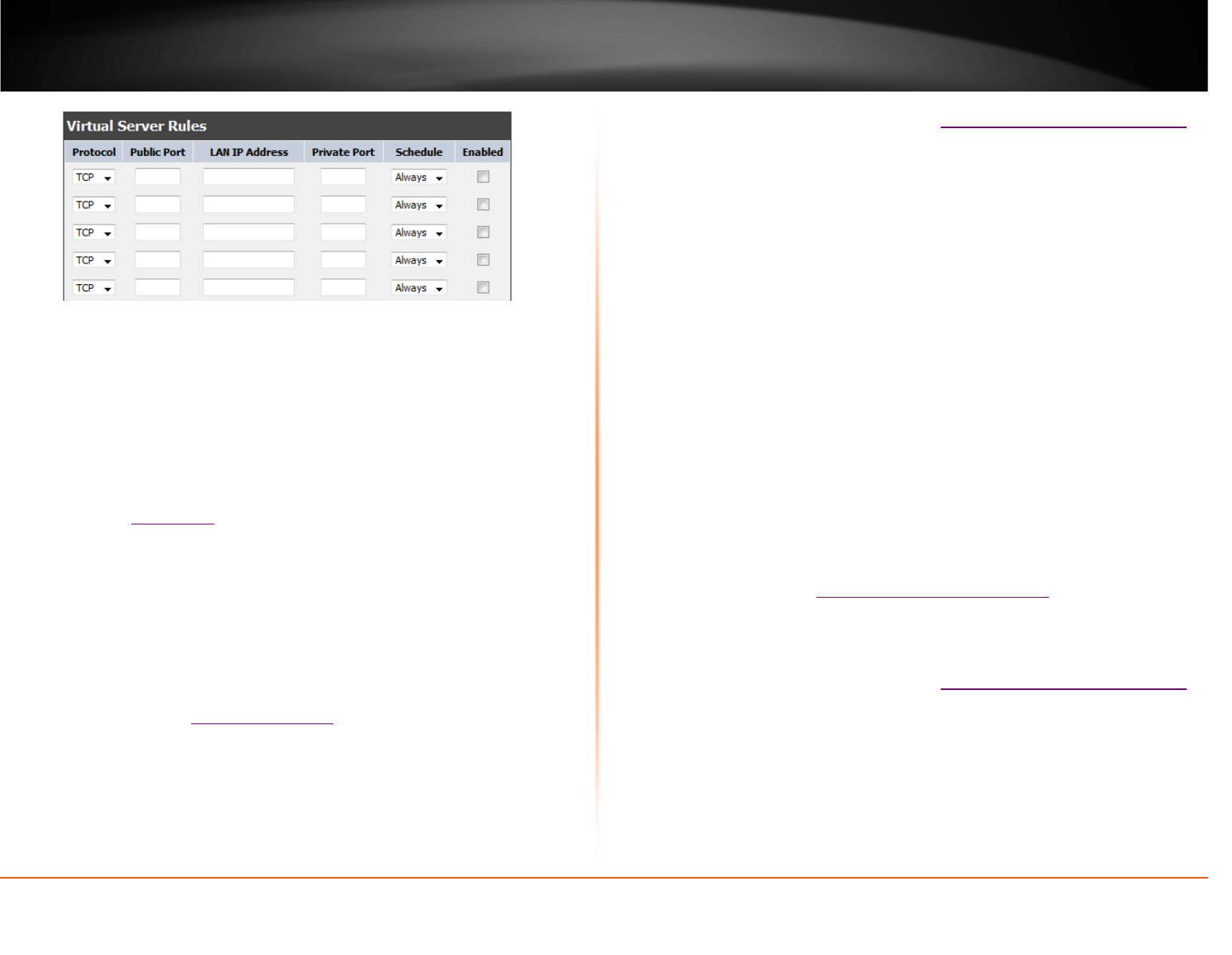
© Copyright 2013 TRENDnet. All Rights Reserved.
TRENDnet User’s Guide
TEW-812DRU
34
4. Review the virtual server settings. Click Apply to save settings.
• Protocol: Select the protocol required for your device. TCP or UDP.
Note: Please refer to the device documentation to determine which ports and
protocols are required. You should assign a static IP address to the device or
use DHCP reservation to ensure the IP address of the device does not change.
• Public Port: Enter the port number used to access the device from the Internet.
• LAN IP Address: Enter the IP address of the device to forward the port (e.g.
192.168.10.101).
• Schedule: Select the defined schedule you would like to have the rule to be
applied (see “
Set Schedule” section on page 31).
Note: The Public Port can be assigned a different port number than the Private
Port (also known as port redirection), however it is recommended to use the
same port number for both settings. Please refer to the device documentation
to determine which ports and protocols are required.
• Enabled: Selecting Enabled turns on the virtual server and unchecking disabled
the rule..
Example: To forward TCP port 80 to your IP camera
1. Setup DynDNS service (see
Identify Your Network section pg.38).
2. Access TRENDnet IP Camera management page and forward Port 80 (see product
documentation)
3. Make sure to configure your network/IP camera to use a static IP address.
Note: You may need to reference your camera documentation on configuring a
static IP address.
4. Log into your router management page (see “
Access your router management page”
on page 26).
5. Click on Advanced, and click on Virtual Server.
6. Click Enabled to turn on this virtual server.
7. Next to Name, you can enter another name for the virtual server, otherwise, leave
the default name.
8. Next to LAN Server, enter the IP address assigned to the camera. (e.g.
192.168.10.101)
9. Next to Protocol, make sure TCP is selected in the drop-down list.
10. The Private Port and Public Port, make sure port number 80 is configured for both
settings.
11. To save the changes, click Add.
Special Applications
Advanced > Special Application
Special applications (also called port triggering) is typically used for online gaming
applications or communication applications that require a range of ports or several
ports to be dynamically opened on request to a device on your network. The router will
wait for a request on a specific port or range of ports (or trigger port/port range) from a
device on your network and once a request is detected by your router, the router will
forward a single port or multiple ports (or incoming port/port range) to the device on
your network. This feature is not typically used as most devices and routers currently
use UPnP (Universal Plug and Play) to automatically configure your router to allow
access for applications. See “
Enable/disable UPnP on your router” on page 37.
Note: Please refer to the device documentation to determine if your device supports
UPnP first, before configuring this feature.
1. Log into your router management page (see “
Access your router management page”
on page 26).



